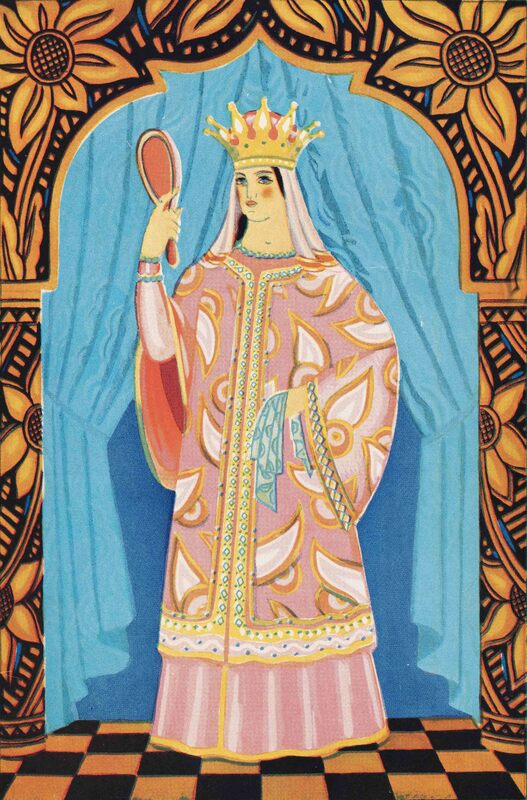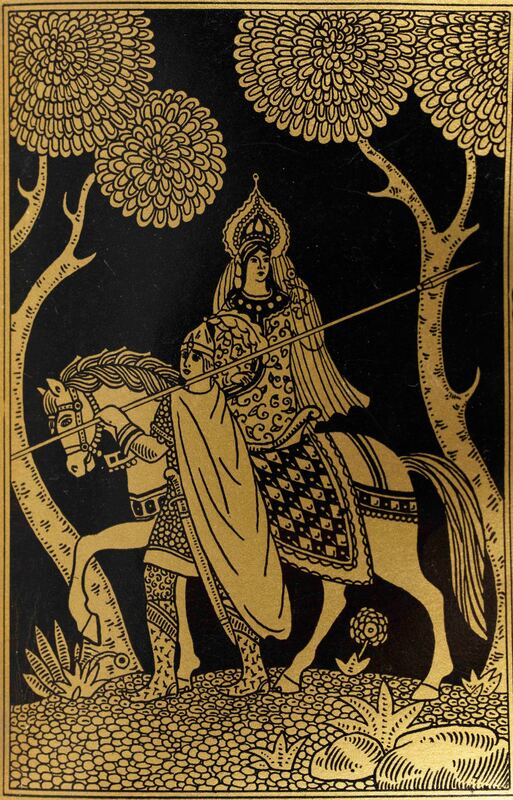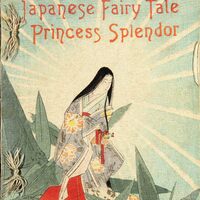Exhibit Contents
- Once Upon a Time
- Skazki: Tales and Legends of Old Russia
"Skazki" or Russian Fairy Tales
Due to the coexistence of pagan and Christian beliefs in Russian culture, Russian fairy tales are deeply rooted in Slavic mythology while also containing Christian elements. These stories often feature spirits, sorcerers, witches, animals with human qualities, and legendary creatures like dragons. Tales of manners that reflect local customs and values are also common.
In Skazki: Tales and Legends of Old Russia, Ida Zeitlin has compiled some of the most beloved Russian fairy tales originally published by Alexander Afanasiev, Vasily Zhukovsky, and Alexander Pushkin in the 19th century. The story pictured here, “The Sleeping Tsarevna and the Seven Giants,” is an 1833 poem by Pushkin based on Russian folklore. It is one of a handful of fairy tales by the author, all of which are in verse. Also known as “The Tale of the Dead Princess and the Seven Knights,” the story resembles the Grimm tale “Snow White” in which Pushkin no doubt found inspiration.
“The Sleeping Tsarevna and the Seven Giants”
In the story, the daughter of the Tsar is cast out by her stepmother after the magic mirror pronounces that the young princess is the most beautiful in the land. At once, the Tsarevna’s fiancé Prince Yelisei sets out searching for his love, asking the sun, the moon, and the wind for help.
The Tsarevna comes across the home of seven bogatyrs or knights whom she befriends. After some time, the queen’s servant girl comes disguised as a nun and gives the princess an apple. After biting into it, she is poisoned and dies. Not long after, Prince Yelisei finds the Tsarevna in a crystal coffin. In throwing himself upon the coffin, it breaks and the princess comes back to life. When the couple returns to the palace, the evil queen falls dead in agony.
Though there are many similarities between the Russian and Grimm versions, “The Sleeping Tsarevna” is considerably more romantic than “Little Snow White.” Whereas in the Grimm story the prince falls in love with the girl after seeing her in the coffin, Prince Yelisei saves the Tsarevna after searching the world for her.




